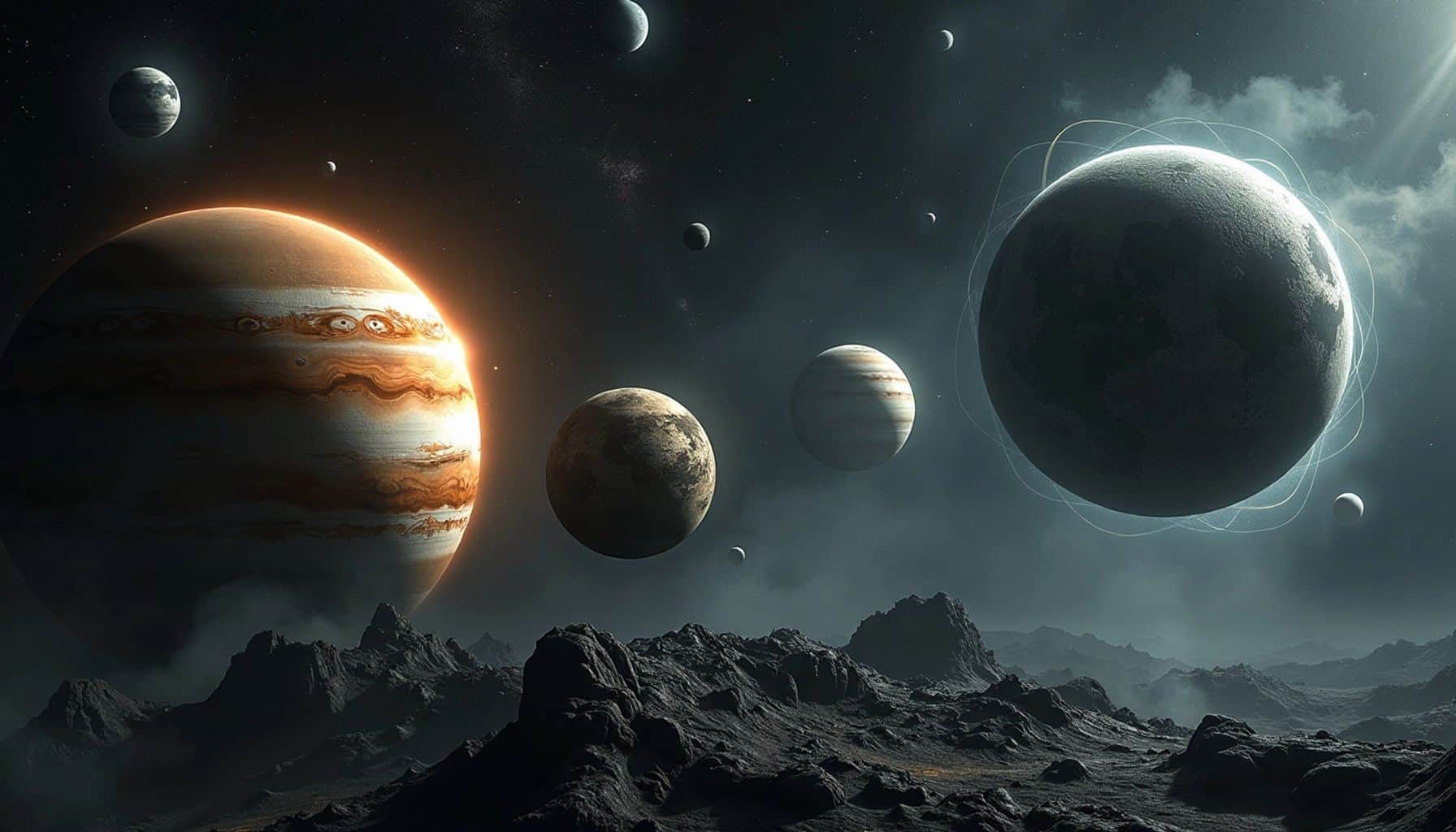Life is a mysterious phenomenon. As far as we know, Earth is the only place in the universe where it exists. This uniqueness can feel comforting yet disconcerting. Humanity has long gazed into the cosmos, searching for signs of life beyond our planet. Surprisingly, there are numerous locations within our solar system that still hold potential for harboring life. Let’s explore these intriguing possibilities.
Key Takeaways
- Liquid water and energy sources are essential for life.
- Mars, Europa, and Enceladus are prime candidates for extraterrestrial life.
- Future missions aim to explore these celestial bodies for signs of life.
The Essentials For Life
To understand where life might exist, we must first consider two critical factors:
- Liquid Water: Essential for biochemical reactions, water is a solvent that carries nutrients and compounds in and out of cells. All life forms on Earth are primarily composed of water.
- Energy Source: Life requires energy for growth and reproduction. This energy doesn’t necessarily have to come from the Sun. For instance, organisms near hydrothermal vents on Earth rely on chemosynthesis, using chemicals released from the vents instead of sunlight.
The Sun: Not A Likely Candidate
Our sun is a stable G-type star, but it’s not a good place to look for life. The extreme temperatures on its surface make it inhospitable. While some speculate about energy-based life forms, the chances are slim.
Mercury: A Harsh Environment
Mercury fails to meet the criteria for life:
- Atmosphere: Very tenuous.
- Temperature: Ranges from over 400°C on the day side to -170°C at night.
- Water: Ice exists in permanently dark craters, but liquid water is theorized to be essential for life.
Venus: A Surprising Possibility
Venus has a thick atmosphere, but it’s too close to the Sun, resulting in surface temperatures exceeding 400°C. However, scientists speculate that microorganisms might exist high in its clouds, utilizing UV light for energy. The detection of phosphine in the atmosphere raises intriguing questions about potential microbial life.
Mars: The Best Bet So Far
Mars is often considered the most promising candidate for extraterrestrial life:
- Location: Situated in the Goldilocks zone.
- Atmosphere: Lacks a magnetic field, leading to atmospheric loss.
- Water Evidence: Dried-up rivers and lake beds indicate past water presence.
Despite the challenges, NASA is determined to find solid evidence of life on Mars. Potential signs include:
- Methane: A byproduct of life.
- Meteorites: Some contain formations resembling fossilized bacteria.
Jupiter: Not Life-Friendly, But Its Moons Are
Jupiter itself is inhospitable, but its moons, particularly Europa, show promise:
- Europa: Believed to have a subsurface ocean beneath its icy crust. Evidence includes:
- Fault lines indicating movement.
- Water plumes detected by the Galileo spacecraft.
NASA plans to launch the Europa Clipper mission in 2024 to explore these water plumes further.
Other Moons of Interest
Beyond Europa, other moons like Ganymede and Callisto may also harbor subsurface oceans. Ganymede, the largest moon in the solar system, could have multiple water layers, making it another candidate for life.
Enceladus: A Moon with Potential
Enceladus, a moon of Saturn, is particularly exciting:
- Geysers: Ejecting water and minerals into space.
- Chemical Composition: Contains essential elements for life.
Future missions aim to explore Enceladus, but timelines for such explorations remain uncertain.
Titan: A Unique Environment
Titan, Saturn’s largest moon, has a thick atmosphere and liquid methane lakes. This unusual environment raises the possibility of life forms that could exist in hydrocarbon-based ecosystems. NASA plans to launch a rotorcraft to Titan in 2028 to investigate further.
Comets: The Wild Card
Lastly, comets may also hold secrets about life in the universe. The Philae lander found organic materials on comet 67P, suggesting that life could potentially propagate through the galaxy on comets. However, this idea remains speculative.
In conclusion, while Earth is currently the only known home for life, our solar system is filled with intriguing possibilities. Future missions will help us uncover whether we are truly alone in the universe or if life exists in our celestial backyard. Stay tuned for more exciting discoveries!




